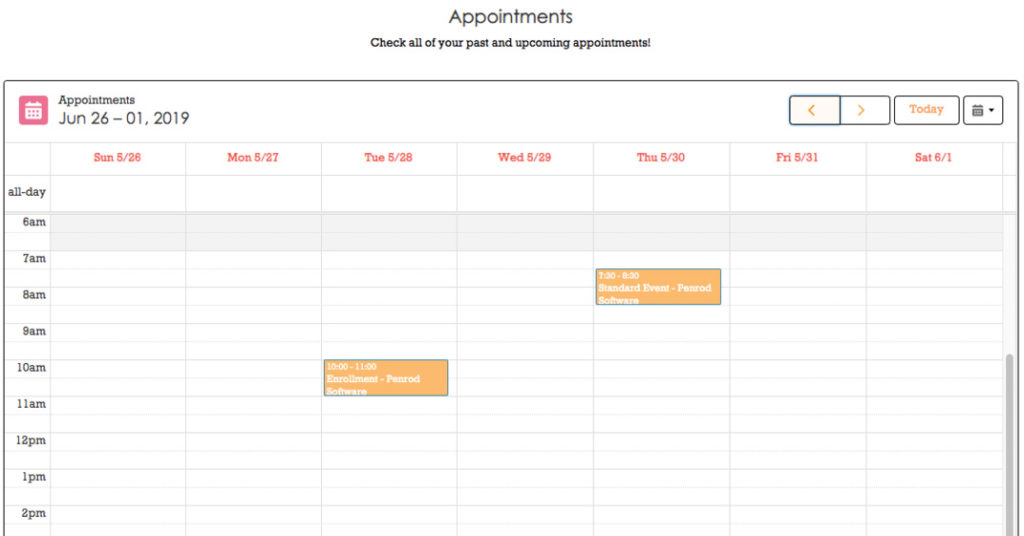It seems that these days, every healthcare provider has a patient portal offering online access to medical records, the ability to schedule appointments, refill prescriptions, and more. It’s become a must-have, but it’s also a value–add for both patients and providers.
Because health portals have become standard, it’s easy to overlook the true value a healthcare CRM portal can add and which things you want to include. Penrod has you covered. Our team has done extensive research on patient portals and their benefits. We’ve called out five key features patient portals should include, so you’ll know how investing in the right elements can pay off for both you and your patients.
–
1) Stay Connected = Higher Patient Engagement
One of the top-rated aspects of patient portals is the ability to stay connected. Patients often say when it comes to their health records, accessibility is key. With a portal, they can easily access a variety of health-related information, including appointments, test results, and prescription history. Parents of younger children especially enjoy the ease of being able to access their child’s health history as well as quickly message their care team anytime, anywhere.
Provider benefit: Increased patient engagement. Portals make it easy for patients to take an active role in their healthcare, from preventive screenings to treatments. This allows providers and their teams to be able to better manage their patients’ care. They can quickly respond to messages electronically, so needs can be addressed without long waits. This goes a long way in gaining patient loyalty.


2) Preventive Care = Lower Costs
The old adage goes, “An ounce of prevention is worth a pound of cure.” Adjusted for inflation in today’s age, it’s probably worth several pounds! It’s no surprise that engaged patients take an active role in their healthcare, especially when it comes to preventive care. Patient portals make it easy to stay on top of upcoming appointments or alerts. Flu season coming? Providers can send out an alert to a specific patient base letting them know that flu shots are available and can help protect people against a nasty virus.

Provider benefit: Not only does this save sick days and downtime, but it also saves patients – and providers – money. By staying on top of preventive care, physicians and their teams can better manage patient care, and the associated workflow, to help their patients stay their healthiest.
3) Easy Billing Access = Faster Payments
Let’s face it: bill paying can be painful. However, health portals help take the sting out of it. With a bill payment option configured into a health care portal, patients simply log in, see the balance, and are directed to an online payment form. It’s fast, easy, and convenient – almost like ripping off a (tiny) bandage!
Provider benefit: Billing capabilities through patient portals benefit providers in a few ways. Because the system is automated, it can help streamline bookkeeping workflows. It also takes out the manual step of having to send multiple paper reminders, if patients opt for electronic-only correspondence. Perhaps the biggest benefit is faster payments. With electronic correspondence, patients will get an alert in their inbox instantly – no waiting for the postal service – and they can easily pay online instantly.
–
4) Pre–Fill Personal Info = Better Patient Data
It’s a fact of life: No one enjoys waiting rooms, especially when they have to sit and fill out what may feel like a mountain of paperwork. With a patient portal, patients can skip the paperwork routine. Instead, they can pre-fill out necessary information online before they even step into the waiting room. A possible side effect? Reduced blood pressure!
Provider benefit: Having patients pre-fill data online via a health portal can also help keep office staff’s blood pressure at a healthy level thanks to fewer errors and missed fields. By requiring certain fields be filled in order for the file to be saved, your office staff won’t have to call patients to let them know “You missed a spot.” Not only does this increase efficiency, but there is also a greater chance the data will be accurate. When patients arrive, your team can ask them to simply review their pre-filled information when they come in to ensure it is correct and up to date.
–
5) Patient Education = Better Outcomes
Doctor’s visits can often feel overwhelming. Yes, patients receive a lot of helpful information, but they may prefer it in bite-size bits. Patient portals can help make this information more manageable. By logging into their health portal, patients can access articles and educational items suggested to them by their provider or healthcare team. Patients can then come to visits better prepared to discuss questions and concerns with their doctor. They can also reference these articles post-visit, so they can follow instructions carefully, which can help lead to better outcomes.

Provider benefit: When patients have a greater understanding of their care, it can help lead to better outcomes. Physicians and their teams provide a solid source of information, from diagnosis to treatment, but this is made more effective when the patient feels empowered and knowledgeable about their course of care. This way, both healthcare teams and patients have the best tools of staying healthy for years to come.
Patient portals and healthcare CRMs are standard in healthcare settings. However, it’s important to remember that no two portals are the same. When determining which one to choose, be sure to look closely at key features that will benefit your patients and your healthcare team.
Ready to improve your patients’ experience and streamline your team’s workflow? Let’s talk! Contact us today.